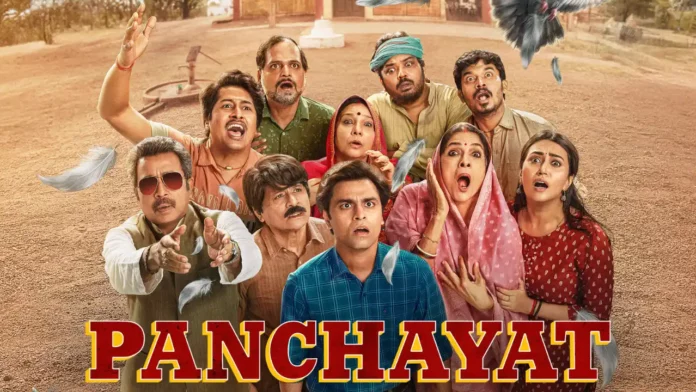Adnan Ali, TwoCircles.net
The hit Amazon Prime series ‘Panchayat’ has become one of India’s most popular web shows, widely appreciated for its simple storytelling and authentic rural setting. But as Season 4 continues to top viewership charts, critics say the show subtly reinforces long-standing caste hierarchies, offering no representation of marginalised communities and featuring only upper-caste surnames throughout.
Released on 24 June 2025, the newest season introduces a new village head in Phulera. However, viewers have pointed out that the position continues to remain with someone from the Brahmin community. The earlier pradhan (village head), ‘Manju Devi Dubey’, portrayed by Neena Gupta, loses the election.
However, the winning candidate, ‘Kranti Devi Sharma’, also belongs to an upper-caste background. Her husband, ‘Bhushan Sharma’, is shown in a negative light, but the pattern of assigning leadership to upper-caste characters remains intact.
This pattern is not new to ‘Panchayat’. In the very first episode of Season 1, Brij Bhushan Dubey, referred to as ‘Pradhan Pati’, loses the key to the local office. His wife, ‘Manju Devi’, who is the elected pradhan, jokingly tells him that he should have tied the key to his “janeu” (a sacred thread worn by Brahmins). Though the scene plays out humorously, it subtly links power and legitimacy to caste identity.
A look at the names of the principal characters reveals a clear trend. Raghubir Yadav plays ‘Brij Bhushan Dubey’, the pradhan. Faisal Malik continues to portray the character of ‘Prahlad Pandey’, a prominent resident who remains an important part of the local political scene and is affectionately referred as ‘Prahlad Chacha’. Jitendra Kumar portrays ‘Abhishek Tripathi’, the sachiv (secretary to the pradhan). Chandan Roy plays ‘Vikas Shukla’, the assistant secretary.
All of these surnames are traditionally associated with the Brahmin community in North India.
Other influential characters also carry upper-caste surnames. The local MLA, Chandra Kishore Singh, played by Pankaj Jha, has a surname often associated with Rajputs or Thakurs, both upper castes. Even in Seasons 2 and 3, the doctor who appears briefly is named Tripathi, again reinforcing this pattern visually.
Meanwhile, the surnames of common villagers are never revealed. But whenever someone from outside Phulera appears in a position of authority or respect, their caste identity is made explicit. In Season 2, Episode 7, Abhishek Tripathi’s friend visits the village. ‘Pradhan Ji’ or ‘Pradhan Pati’ repeatedly asks him for his full name, stopping only after hearing ‘Gupta’, another Hindu upper-caste surname.
Even with a leadership change in Season 4, ‘Manju Devi Dubey’ replaced by ‘Kranti Devi Sharma’, the show’s portrayal of caste remains unchanged.
Dr. Saroj Kumar, a postdoctoral researcher from a marginalised background, sees this as part of a deeper issue. He has completed a PhD focusing on media representation of marginalised communities.
“From films to TV serials to OTT shows, Dalits are not shown at all, like in ‘Panchayat’, or they are shown in negative roles, or as if they always need an upper-caste saviour,” he says.
He references films like ‘Achhut Kanya’ (1936) and ‘Article 15’ (2019), where Dalit stories are told, but always through an upper-caste protagonist.
Dr. Kumar argues that ‘Panchayat’ promotes the idea that leadership naturally belongs to the upper castes.
“It may look normal, but this is a form of assertion or cultural control,” he says, referring to Italian thinker Antonio Gramsci’s theory of hegemony, where dominance is not just imposed but made to appear natural and acceptable through cultural means.
He warns that such portrayals can leave a lasting psychological impact on young viewers from marginalised backgrounds. “It sends the message that they are not fit to lead. It creates an inferiority complex that stays with them,” he says.
Despite the minimal screen presence of Dalit characters, Dr. Kumar believes there is growing momentum for visibility. “Look at ‘Panchayat’. There is no visible representation of marginalised communities. Those in power want to erase our identities. But literature, activism and public discourse are making it harder for them to succeed,” he observes.
He remains hopeful. “Like Dalit literature found its space, one day the cinema industry will too. It will take resistance, but it will happen,” he concludes.


